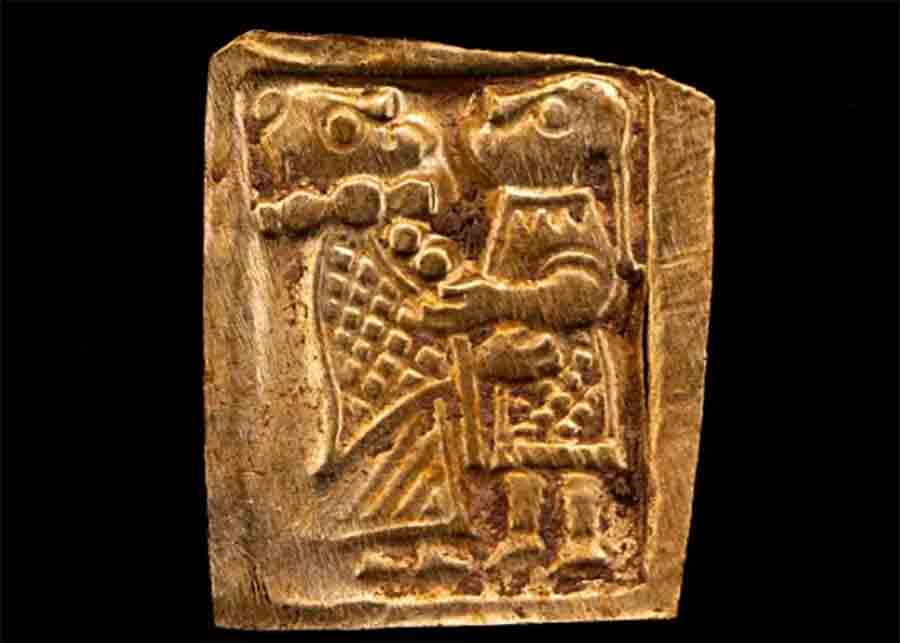Archaeologists have unearthed five minuscule gold foil figures in Hov, Norway, each measuring just under 1 centimetre in height, offering potential insights into an ancient society. These intricately detailed gold foils were found during excavations of a pagan religious temple and represent a rare discovery in Norway, which has only 10 known sites. The Hov temple alone has produced 35 such gold foils, while over 3,000 similar foils have been found across Scandinavia.
Significance of the Findings
The gold foils, known as gullgubber or “golden old men,” typically depict men, women, and animals adorned with jewelry, weaponry, drinking cups, and attire reflective of the wealth and royalty during the Merovingian Period, which predates the Viking era from 476 to 750 AD.
Their purpose remains a subject of debate, with theories suggesting they could represent gods and goddesses from Norse mythology or possibly be related to rituals performed in pagan buildings. Notably, many of these foils feature images of couples, leading researchers to speculate that they might be connected to marriage rituals. koin303
Unique Context
What sets these gold foils apart is the context in which they were found. Typically, these foils are unearthed without any clear connection to a building or structure. However, the ones found in Hov were located within the walls and post holes of the temple, suggesting that they may have been offerings placed there intentionally.
Geographical and Cultural Significance
The designs on these gold foils show clear regional variations and distinct art styles, helping researchers identify their likely origins within Scandinavia. These artifacts offer valuable insights into the cultural, religious, and economic aspects of the time. The location of Hov, near the largest lake in Norway, placed it at the crossroads of trade routes, emphasizing its importance in the region during this period.
The Name “Gullgubber”
The term “gullgubber” originates from the Norwegian word “gullgubbe,” meaning “golden old men.” While it may sound whimsical, this name has been used by archaeologists for these gold foils for centuries, cementing its status in archaeological discussions. coin303
Intriguing Findings Continue
The discovery of these gold foils and their unique context offers a tantalizing glimpse into an ancient society’s practices and beliefs. While their exact purpose remains shrouded in mystery, their significance is unquestionable, contributing to our understanding of the cultural tapestry of early Scandinavia.
